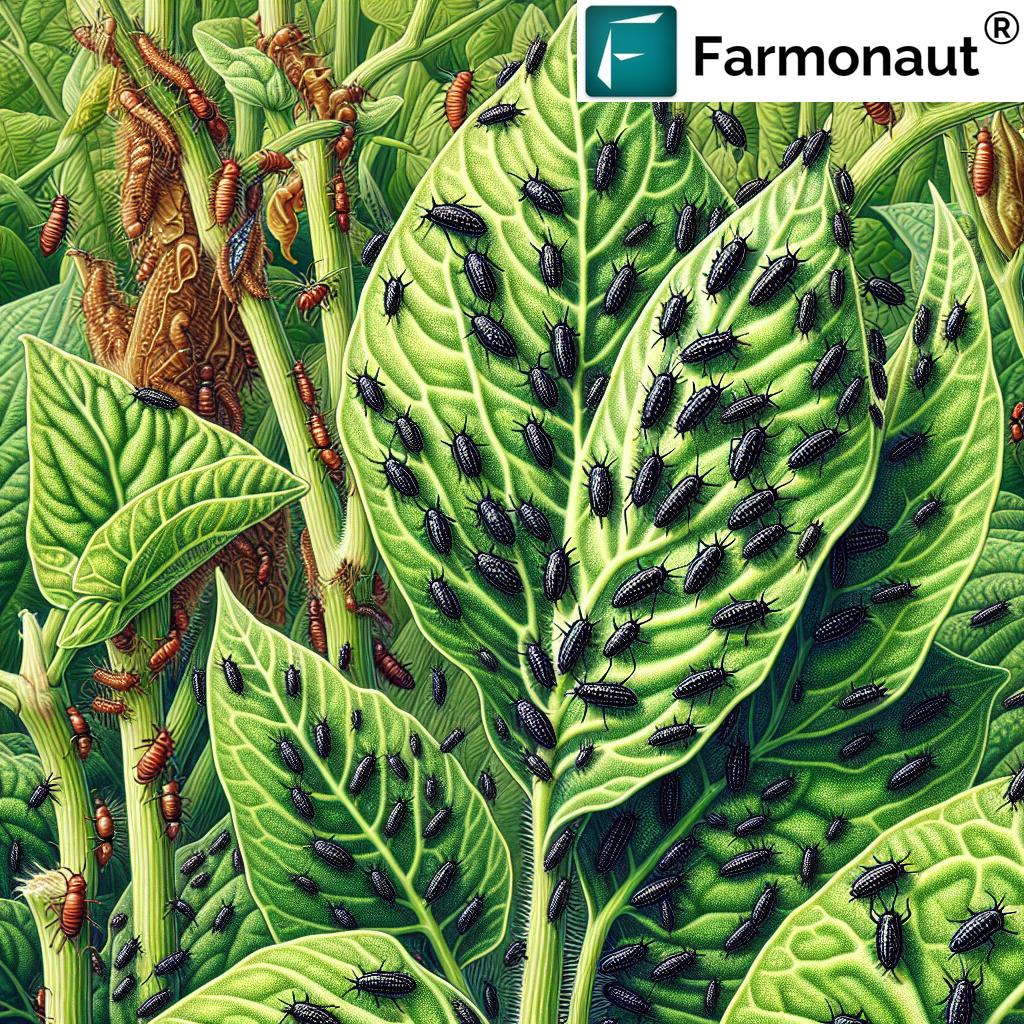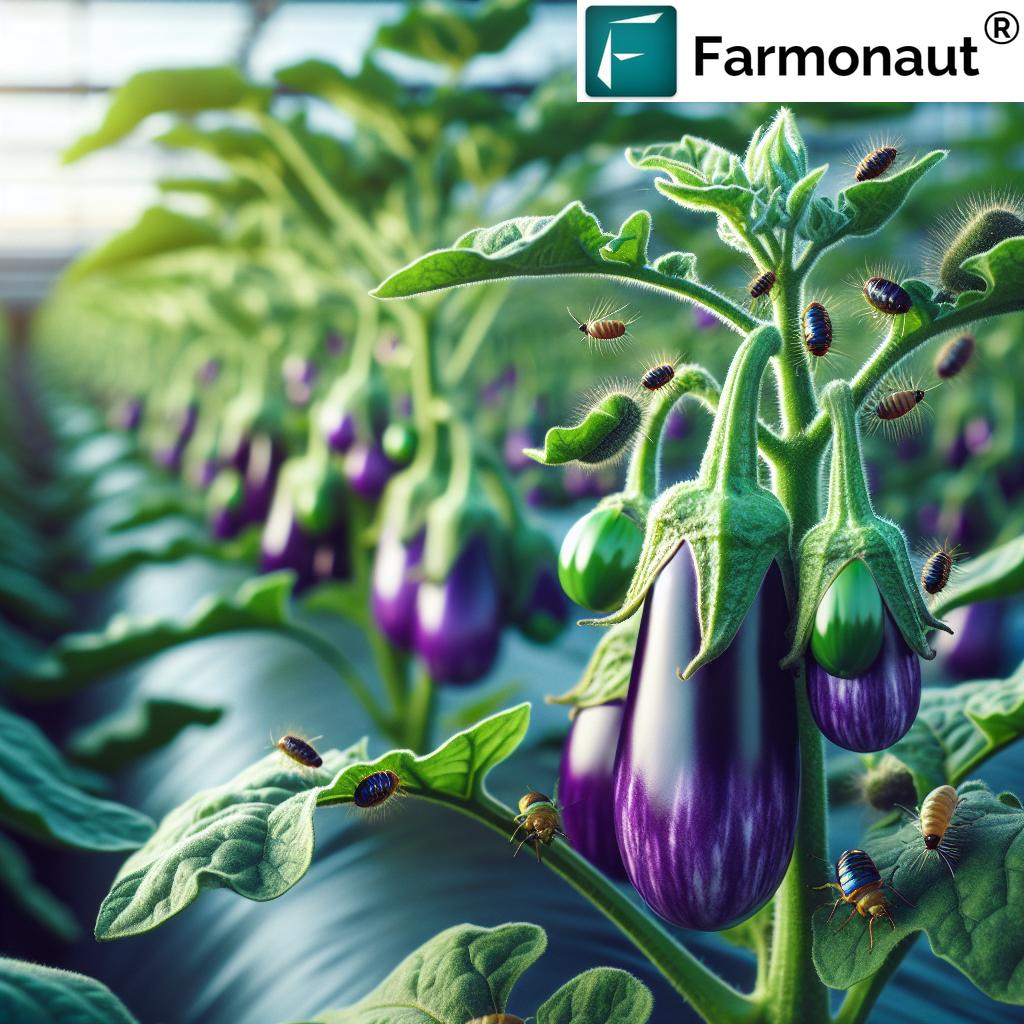Grain & Corn Milling: 7 Wet Milling Innovations 2026
Table of Contents
- Introduction
- Corn Milling and Its Importance
- Understanding Wet Milling: Efficiency & Versatility
- Corn Milling Machines: Technological Upgrades
- Rice Milling: Parallel Advances
- Impact on Agriculture and Industry
- Grain & Corn Milling: 7 Wet Milling Innovations 2026
- Comparison Table of 7 Wet Milling Innovations (2025-2026)
- Sustainability & Future Outlook
- Farmonaut: Empowering Agriculture with Satellite Technology
- Frequently Asked Questions (FAQ)
- Conclusion
“Seven new wet milling technologies are projected to boost corn processing efficiency by up to 30% by 2026.”
Introduction
In 2025 and looking ahead to 2026, grain milling—particularly corn milling, corn wet milling, and rice milling machine technologies—continues to revolutionize agriculture and global food industries. Driven by the ever-increasing demand for sustainable and efficient production, the sector is experiencing significant advancements that improve yield, quality, energy efficiency, and environmental sustainability. The surge in innovative wet milling and dry milling methods, as well as upgrades in corn milling machines and integration of smart controls, is reshaping the way we extract, process, and add value to staple grains.
This comprehensive article explores the crucial role of these advancements, delves into the top 7 wet milling innovations for 2026, and highlights the broader impacts on food processing, agriculture, and environmental objectives.
Corn Milling and Its Importance
Corn remains one of the world’s staple grains—essential for direct consumption and as a crucial raw material for a wide array of products, including animal feed, biofuels, starch, sweeteners, and industrial food applications. At its core, corn milling is the process of separating and refining corn kernels into valuable components like starch, gluten, fiber, and oil. Two primary milling methods—dry milling and wet milling—are used today.
Primary Functions of Corn Milling:
- Transforming whole corn kernels into diverse, high-quality products
- Maximizing yield and nutritional value for food and feed sectors
- Enabling industrial applications like adhesives, paper manufacturing, ethanol, and bioplastics
- Driving agriculture sustainability through value-added processing
“Advanced grain milling techniques could reduce energy consumption in agriculture by 15% by the year 2025.”
Understanding Wet Milling: Efficiency and Versatility
Wet milling—also known as corn wet milling—is a comprehensive process involving the soaking of corn kernels in water with a mild acid or enzyme solution to soften them, thus facilitating separation of basic components. Wet milling machines in 2026 have become increasingly sophisticated, leveraging automation, smart sensors, and advanced control systems to improve yield, reduce water and energy consumption, and minimize waste.
Key Stages in Wet Milling
- Soaking (Steeping): Kernels are soaked in a controlled solution to soften and initiate starch-protein separation
- Grinding: Advanced grinding mills gently break the softened kernels
- Separation and Refinement: Sophisticated separators and centrifuges extract starch, gluten, fiber, and germ
- Purisol (Purification): Components are refined further for industry-standard purity
Products Generated by Modern Corn Wet Milling:
- Corn Starch: For food products, paper, and adhesives
- Corn Oil: Extracted from germ for higher-value cooking and industrial uses
- Gluten Meal & Feed: Protein-rich ingredient used in livestock nutrition
- Corn Fiber: As dietary supplements, fermentation substrates for biofuel or ethanol
Why Wet Milling?
- Higher Purity: Extracts higher-purity starch and protein products vital for food, beverage, and industrial applications
- Versatility: Allows facilities to integrate and switch between products seamlessly
- Sustainability: Improved systems reduce energy and water usage, enhancing the environmental profile of the sector
- Automation: Lowers manual intervention, enabling 24/7 operation and consistent quality
Corn Milling Machines: Technological Upgrades in 2025 and Beyond
By 2026, corn milling machine design is advancing rapidly in both scale and efficiency:
- IoT Integration & Smart Control: Real-time monitoring, fiber and gluten yield tracking, predictive maintenance, and remote operation via mobile/web apps
- Material Upgrades: Transition from traditional stone/hammer mills to roller mills with durable, hygienic materials that curb breakage and enhance nutritional retention
- Energy Efficiency: Next-gen machines consume up to 20% less power compared to models from just five years ago
- Adaptive Milling: Mills automatically adjust grinding parameters based on grain variety and incoming kernel quality
- Scalability: Designed for both farming cooperatives and large-scale industrial processing
This convergence of advanced technologies ensures the sector remains crucial in meeting growing global demand for high-quality processed grains.
Want to enhance your food processing value chain? Check out Farmonaut’s blockchain-based product traceability solutions for transparent sourcing, boost consumer trust, and ensure product integrity from farm to table.
For farmers processing at scale or looking to maximize grain quality, Farmonaut’s large-scale farm management platform provides satellite-based field insights, operational advisory, and logistics tracking—all accessible via our robust web and mobile apps.
Rice Milling: Parallel Advances
Rice milling machines are evolving on a parallel track, focusing on similar upgrades in yield, quality, and environmental sustainability:
- Advanced Dehusking/Whitening: Reduced breakage, increased head rice recovery, vital for market value
- Precision Moisture Control: Minimizes energy used; adapts to global grain varieties and climate
- Automated Grading and Cleaning: Improved consistency and safety in rice products
- Eco-Friendly Waste Management: Facilities employ fiber separation for energy/bioplastic feeds
As with corn, these technologies enable the agriculture sector to add value, reduce post-harvest losses, and meet evolving market demands—particularly in regions where rice is a foundational food staple.
Impact on Agriculture and Industry
Modern grain milling and corn milling machine technologies empower farmers and agribusinesses:
- Reducing Post-Harvest Losses: Smart mills and machines curtail spoilage, especially for raw grains
- Enabling Diversification: High-yield processes pave the way for nutraceutical, feed, and bioplastic applications
- Market Expansion: Advanced processing gives access to premium, export-grade products
- Supporting Circular Economy: By transforming waste into inputs for bioenergy, fermentation, and animal feed
In developing regions, adopting modern rice milling machine and corn wet milling technology helps smallholders increase income by upgrading grain quality and expanding to new markets.
Looking for a solution to manage your farm fleets and logistics efficiently? Farmonaut’s Fleet Management tools enable seamless organization, optimize vehicle usage, and reduce operational costs across agri value chains.
Grain & Corn Milling: 7 Wet Milling Innovations 2026
The next wave of grain and corn wet milling innovations promises to improve efficiency, quality, and sustainability at every level of the food and bioindustrial supply chain. These innovations combine advanced engineering, biotechnology, digitalization, and sustainable processing methods to address the rising complexities of global grain demand.
1. Enzyme-Assisted Wet Milling
- How it works: Uses targeted enzymes during soaking and grinding to gently break down proteins and fiber, improving separation
- Efficiency: Boosts starch yield and reduces water/energy usage by 10-20%
- Sustainability: Fewer chemicals and shorter soak times
2. Membrane Filtration Process
- How it works: Advanced membranes selectively filter starch, gluten, and fiber from slurry, eliminating certain mechanical separators
- Efficiency: Up to 25% energy savings over centrifuge-based systems
- Quality: Higher-protein, lower-ash gluten fractions for food and feed
3. Closed-Loop Water Recycling
- How it works: Recovers, filters, and reuses process water from soaking and washing stages
- Sustainability: Reduces freshwater use by up to 80%, significantly lowering environmental impact
- Regulatory Impact: Compliance with stricter water discharge requirements by 2026
4. AI-Driven Process Control Systems
- How it works: Deploys sensors and machine learning to monitor and optimize every stage, in real-time
- Efficiency: Reduces downtime, avoids breakage, detects deviations instantly
- Quality: Ensures consistently high-grade products
Explore how Farmonaut’s satellite data and environmental monitoring can connect your operation to cutting-edge digital agriculture. Get accurate carbon footprinting for your grains and crops—essential for 2026 agri regulations and sustainability goals.
5. High-Shear Wet Grinding Mills
- How it works: Uses high-speed mechanical actions to achieve ultra-fine grinding with lower energy input
- Productivity: Reduces breakage and increases extractable starch yield by up to 5%
- Advantage: Essential for producing higher-purity starches for sensitive food applications
6. Green Processing Aids
- How it works: Substitutes traditional processing chemicals with plant-based or biodegradable materials
- Sustainability: Lowered environmental toxicity and safer effluent streams
- Compliance: Meets rising consumer and regulatory pressure for “clean-label” and GreenTech solutions
7. Integrated Biorefinery Wet Milling
- How it works: Integrates wet milling with on-site biochemical and bioenergy conversion facilities. Corn and rice milling machine byproducts are converted to animal feed, biogas, or bioplastics.
- Benefit: Zero-waste operation, new streams of processed products for energy and feed
- Result: Elevates plant profitability while advancing circular economy principles
Comparison Table of 7 Wet Milling Innovations for Grain & Corn (2025-2026)
| Innovation Name | Est. Efficiency Gain (%) | Energy Consumption Reduction (%) | Sustainability Impact | Quality Improvement Level | Est. Industry Adoption by 2026 (%) |
|---|---|---|---|---|---|
| Enzyme-Assisted Wet Milling | 16% | 12% | High | High | 70% |
| Membrane Filtration Process | 23% | 19% | High | Moderate | 42% |
| Closed-Loop Water Recycling | 13% | 25% | High | Moderate | 51% |
| AI-Driven Process Control Systems | 17% | 8% | Moderate | High | 62% |
| High-Shear Wet Grinding Mills | 7% | 14% | Moderate | High | 57% |
| Green Processing Aids | 11% | 8% | High | Moderate | 44% |
| Integrated Biorefinery Wet Milling | 29% | 28% | High | High | 34% |
Sustainability & Future Outlook for Milling Technologies
In 2026 and beyond, sustainable operation of milling plants moves from nice-to-have to absolute necessity:
- Water Usage: Closed-loop systems curtail freshwater consumption, vital for regions facing water stress
- Energy Sources: Shift towards renewable energy integration in mills and biorefineries
- Waste Management: Biorefinery models turn byproduct fiber, gluten, and wastewater into new products or energy, reinforcing circular economy strategies
Consumer pressures, tightening regulations, and rising operational costs all mean that advanced, environmentally optimized technologies are not just advantageous—they are essential for market competitiveness.
Applying for crop loans or insurance this season? Use Farmonaut’s satellite-powered verification system to simplify paperwork, expedite approvals, and reduce fraud for your grain, corn, or rice operation.
Farmonaut Subscription Plans: Affordable Satellite-Powered Insights
Want to leverage precise, satellite-backed monitoring tools for your grain, corn, or rice operations? Our subscription plans make advanced technology accessible for everyone—from smallholders to large agri-enterprises.
For developers, Farmonaut’s API (View API | API Documentation) offers seamless integration of crop health, weather, and traceability features directly into your enterprise solution.
Farmonaut: Empowering Agriculture with Satellite Technology
At Farmonaut, we are dedicated to making satellite-driven insights affordable and accessible globally. Our satellite monitoring platform—leveraging cloud-based AI, blockchain, and environmental impact analytics—enhances resource management and boosts productivity for agricultural enterprises of all sizes.
Key Benefits:
- Real-Time Monitoring: Monitor crop, soil, and resource health for timely intervention, maximizing grain yield and quality.
- AI-Driven Advisory: Receive automated, location-specific advice to optimize milling and crop management.
- Blockchain Traceability: Build trust and transparency in your supply chain with secure, tamper-proof verification.
- Environmental Compliance: Track carbon emissions, water use, and overall sustainability to meet regulatory and market requirements with precision.
- Scalable for All: Whether for small farms, industrial operations, or government projects, our modular platform fits your needs and grows with your ambitions.
Our subscription and API-based models enable quick adoption and seamless integration into your daily operations, supporting your mission to deliver high-quality food and grain products, sustainably and profitably.
Get started with Farmonaut today: Monitor, map, and optimize your farm or agribusiness from your phone, tablet, or desktop.
Frequently Asked Questions (FAQ)
What are the main differences between dry and wet milling?
Dry milling focuses on cracking and grinding whole grains, mainly separating endosperm from the hull, and is energy efficient but yields lower-purity products. Wet milling involves soaking kernels, breaking them down with water, acid, or enzymes, and refining them into high-purity components like starch, gluten, fiber, and oil, ideal for diverse food and industrial applications.
Why is corn wet milling crucial in modern food processing?
Corn wet milling is indispensable for producing high-purity starches, sweeteners, biofuels, and fermentation substrates. The method enables precise separation of valuable grain components, boosting quality, energy efficiency, and expanding product offerings for food, feed, and industry.
How do wet milling innovations promote environmental sustainability?
Innovations like membrane filtration, closed-loop water recycling, and green processing aids significantly reduce water use, energy consumption, and chemical waste. They transform milling into a more sustainable and circular operation, aligned with 2026 global standards.
How does Farmonaut support grain and corn millers?
We empower millers and agribusinesses through satellite-based crop health monitoring, carbon and water footprint tracking, and blockchain-based traceability. These tools aid in decision-making, regulatory compliance, efficiency improvement, and support access to premium markets and financing.
Will energy costs for grain milling decrease with these new technologies?
Yes. By integrating smart monitoring, high-efficiency grinding, and water/energy recovery systems, grain milling operations can cut energy costs by 10–28%, a major benefit for both the bottom line and sustainability targets.
Which is the best solution for blockchain-based supply chain transparency in agriculture?
Farmonaut’s product traceability platform uses blockchain to ensure verifiable, tamper-proof records from farm to final product, raising consumer confidence and verifying authenticity in food and grain shipments.
Can small farmers adopt these wet milling innovations?
Many modern grain and corn milling machines are scalable and modular, making high-tech milling, real-time monitoring, and sustainability practices accessible to small and medium-sized producers using affordable subscription or pay-as-you-go models.
Conclusion
Grain milling—with a focus on corn milling, corn wet milling, and rice milling machine technologies—is poised for unprecedented transformation as we approach 2026. The integration of next-generation wet milling innovations, advanced machines, and environmentally responsible methods ensures higher product quality, efficiency, and sustainability across the entire food and industrial sector.
By leveraging automation, smart sensors, AI-driven control, and sustainable practices, the industry enhances its capacity to meet the rising, global demand for processed grains, starch, oil, gluten, and fiber with minimum environmental impact. Whether you are a farmer, mill operator, food manufacturer, or agri-entrepreneur, understanding and adopting these trends will be crucial for business growth and sustainability.
At Farmonaut, we remain committed to empowering the grain and food industry with affordable, cutting-edge satellite technology and data-driven resources, fostering a future rooted in transparency, traceability, and environmental stewardship.











